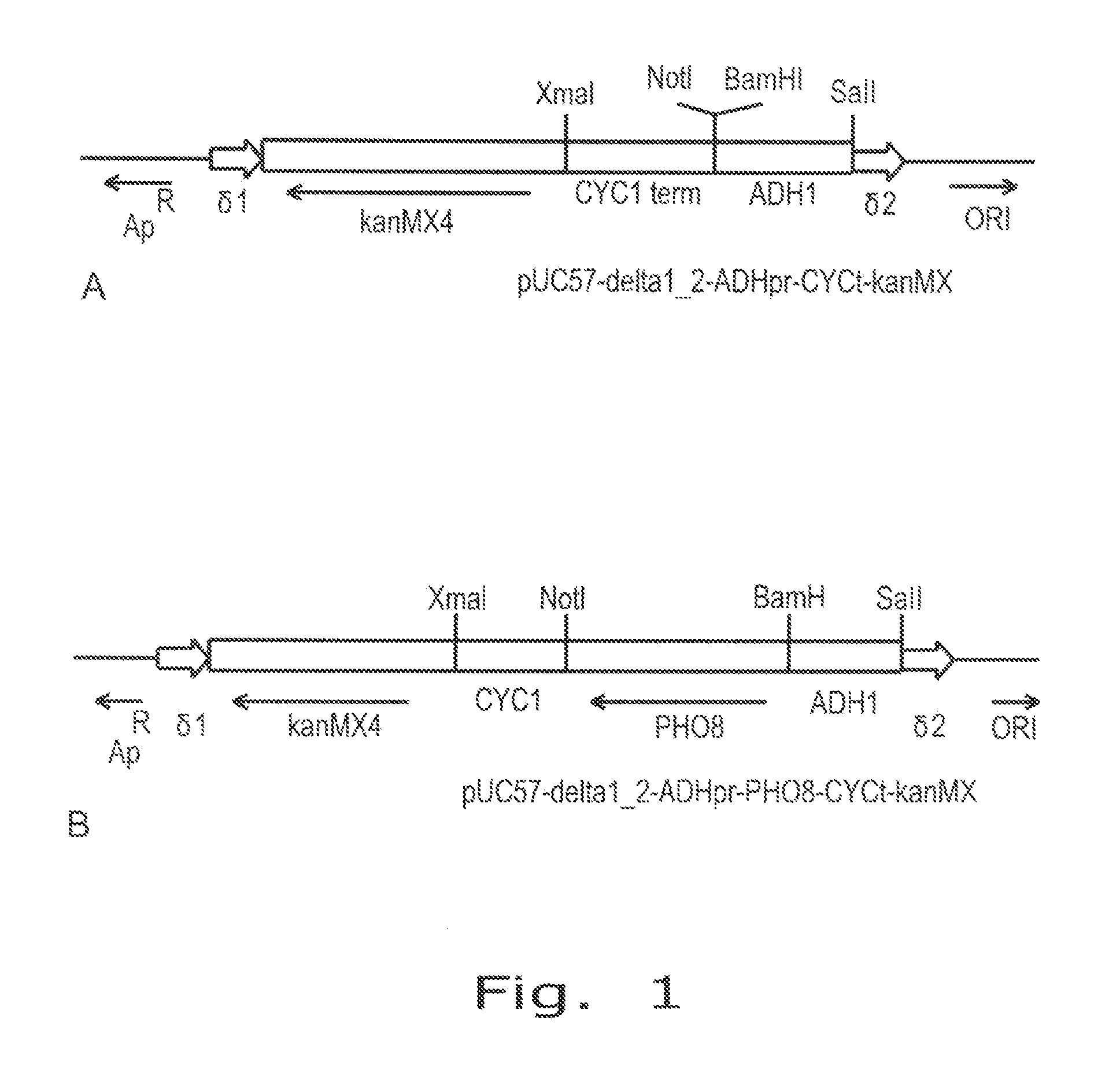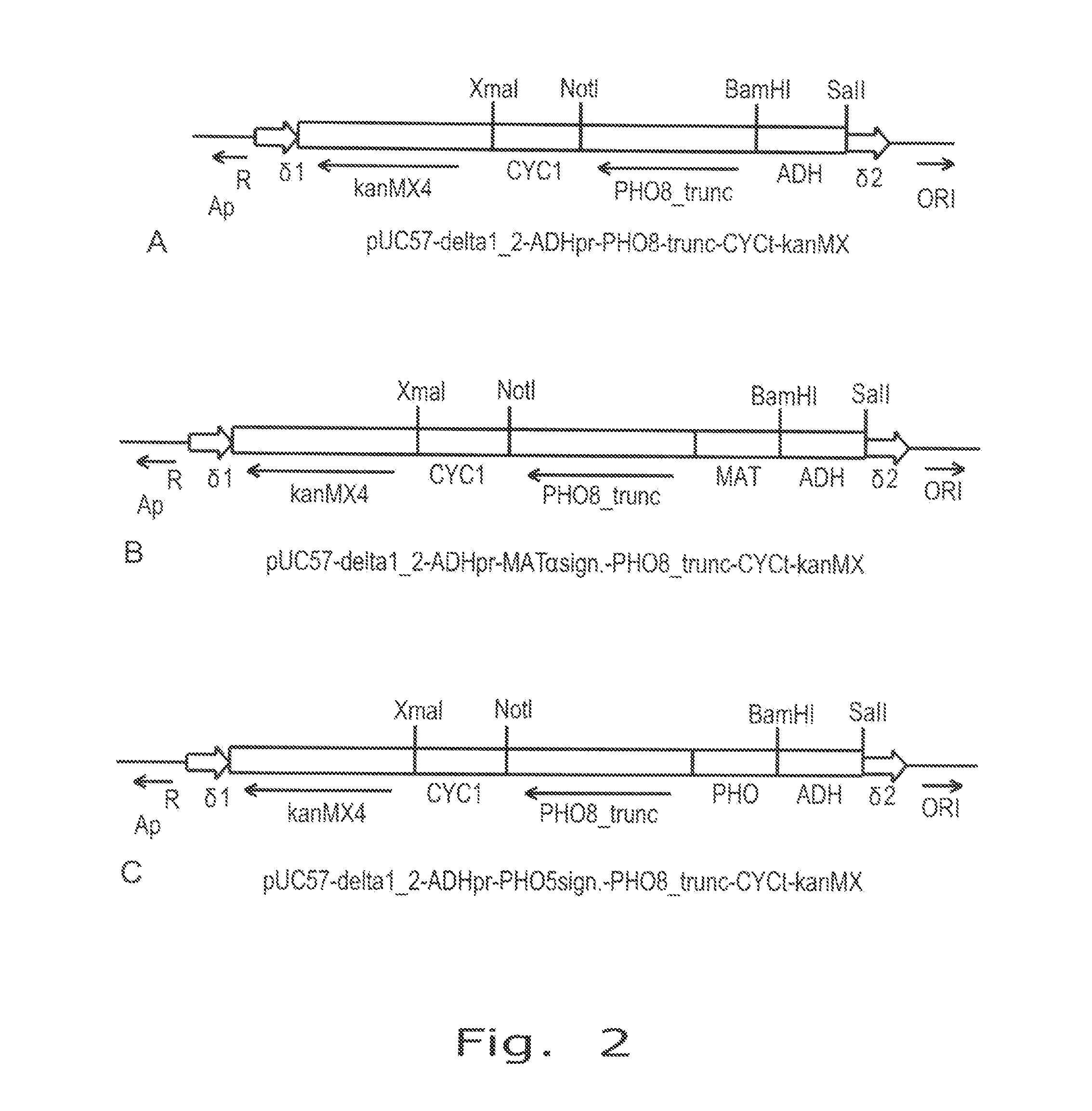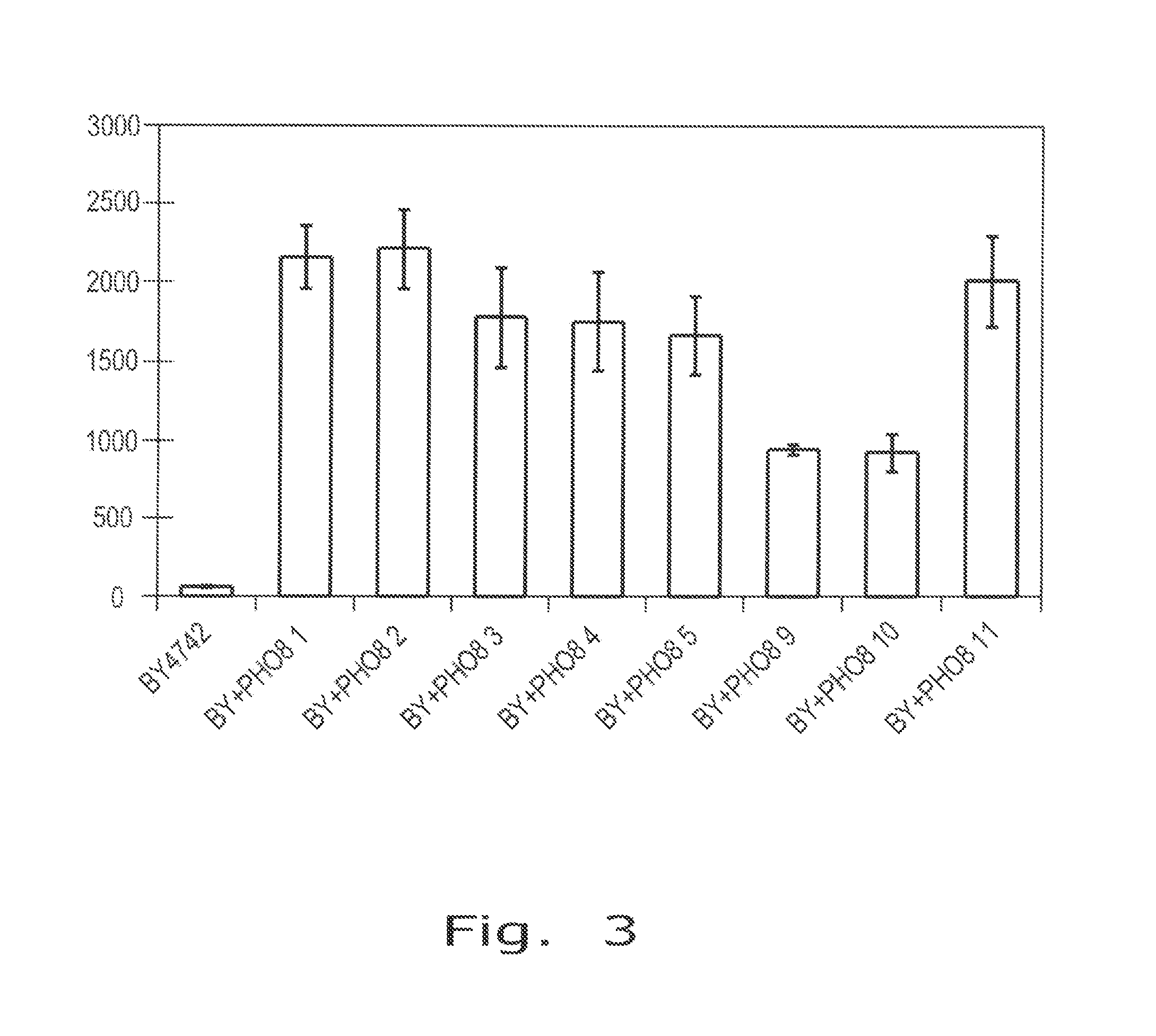Improvement of ethanol yield with reduction of biomass accumulation in the recombinant strain of saccharomyces cerevisiae overexpressing alkaline phosphate
a technology of alkaline phosphate and ethanol, which is applied in the field of expression of alkaline phosphatase e gene, can solve the problems of ethanol, difficulty in nadp regeneration, and low overall yield of the target produ
- Summary
- Abstract
- Description
- Claims
- Application Information
AI Technical Summary
Benefits of technology
Problems solved by technology
Method used
Image
Examples
Embodiment Construction
Strains, Plasmids and Growth Conditions
[0024]The Saccharomyces cerevisiae strain BY4742 (MATα, his3Δ1, leu2Δ0, lys2Δ0, ura3Δ0; (Giaever et al., 2002) and an industrial strain designated AS400 were used for the expression of the intact or truncated versions of PHO8 ORF coding for the alkaline phosphatase, Escherichia coli DH5α (Φ80dlacZΔM15, recA1, endA1, gyrA96, thi-1, hsdR17 (rK+, mK+), supE44, relA1, deoR, Δ(lacZYA-argF) U169) was used for general purposes and routine subcloning.
[0025]For the isolation of plasmid DNA E. coli strains were grown in LB media at 37° C. for 18 hours as described (Sambrook and Rusell 2001). S. cerevisiae strains were incubated at 30° C. For routine application, yeast strains were maintained in a rich YPD medium (1% yeast extract, 1% peptone and 2% glucose) or in a minimal medium of YNB (0.67%, yeast nitrogen base without amino acids, DIFCO, 0.5% ammonium sulfate, 2% glucose) media. For ethanol fermentation, YNB medium was supplemented with 10% glucose o...
PUM
| Property | Measurement | Unit |
|---|---|---|
| Time | aaaaa | aaaaa |
| Strain point | aaaaa | aaaaa |
| Alkalinity | aaaaa | aaaaa |
Abstract
Description
Claims
Application Information
 Login to View More
Login to View More - R&D
- Intellectual Property
- Life Sciences
- Materials
- Tech Scout
- Unparalleled Data Quality
- Higher Quality Content
- 60% Fewer Hallucinations
Browse by: Latest US Patents, China's latest patents, Technical Efficacy Thesaurus, Application Domain, Technology Topic, Popular Technical Reports.
© 2025 PatSnap. All rights reserved.Legal|Privacy policy|Modern Slavery Act Transparency Statement|Sitemap|About US| Contact US: help@patsnap.com



